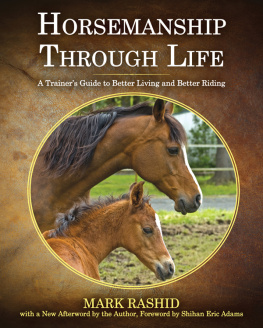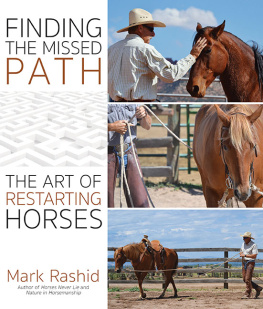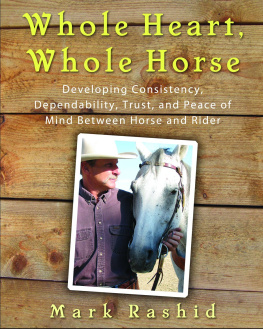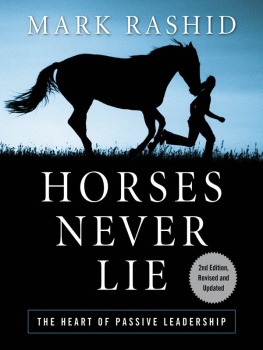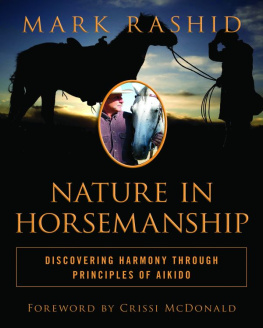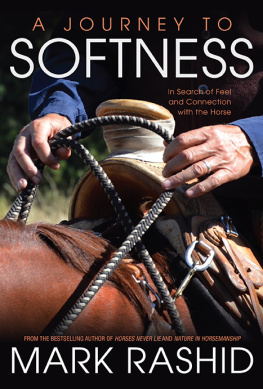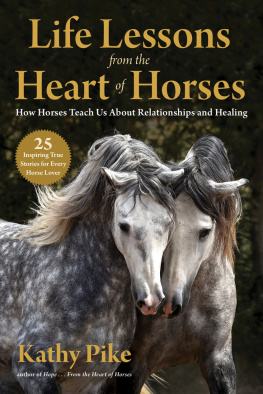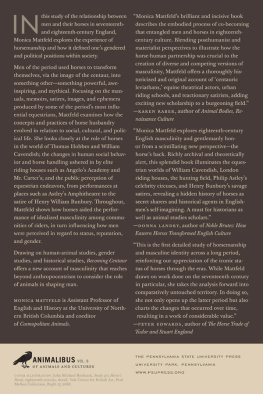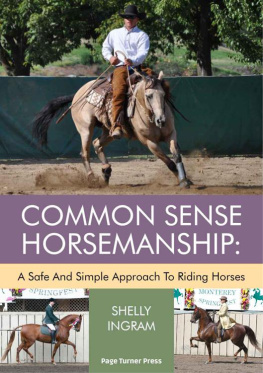Other Titles by Mark Rashid
Considering the Horse:
Tales of Problems Solved and Lessons Learned
A Good Horse Is Never a Bad Color
Horses Never Lie: The Heart of Passive Leadership
Life Lessons from a Ranch Horse

Copyright 2012 by Mark Rashid
All Rights Reserved. No part of this book may be reproduced in any manner without the express written consent of the publisher, except in the case of brief excerpts in critical reviews or articles. All inquiries should be addressed to Skyhorse Publishing, 307 West 36th Street, 11th Floor, New York, NY 10018.
Skyhorse Publishing books may be purchased in bulk at special discounts for sales promotion, corporate gifts, fund-raising, or educational purposes. Special editions can also be created to specifications. For details, contact the Special Sales Department, Skyhorse Publishing, 307 West 36th Street, 11th Floor, New York, NY 10018 or .
Skyhorse and Skyhorse Publishing are registered trademarks of Skyhorse Publishing, Inc., a Delaware corporation.
Visit our website at www.skyhorsepublishing.com
10 9 8 7 6 5 4 3 2 1
Library of Congress Cataloging-in-Publication Data is available on file.
ISBN: 978-1-61608-746-3
Printed in China
Contents

For my friend, Stacy Mendel
Foreword

It is both an honor and a pleasure to be asked by Mark to write the foreword for this groundbreaking book. I believe that when you read this book, you will find it is more than a book about horses and their riders, much more in fact. It is about one person's journey in following his passion, becoming full and then empty again, coming full circle from beginner to master, and then back to beginner again.
It is not a journey for everyone, because it is far from easy. It takes time and hard work and means sometimes having your very breath taken away from you. It is neither for the weak of heart or spirit nor for those with a closed mind. Instead it takes a willingness to learn, be humble, and acknowledge, at times, just how much you don't know.
There is an old saying in the martial arts, When the student is ready, the teacher will appear. This is just what happened to me over twenty years ago and what has happened with so many teachers and students for hundreds of years. Sometimes it takes a while for people to work through all of the things bothering them and holding them back from what they desire to accomplish. Once they are able to come to a single, focused point, usually accepting and realizing that things are just as they are, then they can begin to deal with them in the present moment. It is this ability to deal with things in the present moment that ultimately helps us all move forward.
On the other hand, if we focus on everything that is wrong, we are not able to see what is right. If a person focuses, for instance, on all the injuries they have that won't allow them do something, they often not only make those injuries worse but hold themselves back from what they can do, which is usually considerably more than they think possible.
When Mark talked with me about his thoughts and ideas around aikido and horsemanship, the idea grabbed me right away. The work that Mark is doing is very valuable, both for the horse and rider. I have learned from my teacher that in order to truly become a martial artist, you must live your art every day of your life. Mark is doing this, both in his work and in his life. Few things are more gratifying to a teacher than to see the student take the lesson, apply it, and live it; thereby The Way continues.
It is the spirit the person puts into his work that is very important, more important, in fact, than the technique. We must learn from the journey, not the destination. Mark exemplifies this idea, and I am both proud and respectful of what he is accomplishing. I am also humbled to have had some small part in this journey.
I sincerely hope you are able to take in the lessons shared in this book and that your life may be improved as Mark shares his journey with you.
Osu,
Shihan Eric Adams
Eric Adams was born in Loveland, Colorado, and grew up in Alaska, where he lived for twenty years before moving back to Estes Park, Colorado. Horses have been a part of Eric's life; his mother and father ran riding stables in both Glen Haven and Moraine Park, located in Rocky Mountain National Park. While in Alaska, Eric began studying the martial arts with So-Shihan Charles Scott in Fairbanks. Eventually, Eric earned black-belt ranks in Shudokan Karate, Yoshinkan Aikido, JuJitsu Kobudo (weapons), Gosuku Ryu Karate, and Hojutsu (the art of shooting). He now has a dojo in Estes Park. He also works at the MacGregor Ranch, an historic working cattle ranch and youth education center.
Introduction

I'm not exactly sure when I first used the term horsemanship through life, but I do remember why I used it. It was in response to a question a lady asked me regarding what I thought the most important factor in becoming a good horseman was. I told her it was finding a way to practice horsemanship in your everyday life, not just when you were with your horse. The woman looked somewhat perplexed at the answer.
I went on to explain that from what I often see, many horse people (particularly the backyard horse person) really only practice their horsemanship when they're with their horses. They may go through the rest of their day yelling at the kids, arguing with coworkers, inadvertently butting in line at the supermarket, or having a bout of road rage on the highway. Then they just assume they can work with their horses and suddenly become patient, calm, aware, and understanding.
Or, on the other end of the spectrum, they may go through their day verbally or mentally negotiating every little thing that comes up (even when negotiation isn't appropriate or needed). Yet they think they can approach their horses and somehow become calmly assertive, if and when it's necessary.
The biggest problem is that most people who own horses these days are pretty limited in the time they are able to spend with them. It may be anywhere from a few minutes to a couple of hours per day, if that. The rest of their time is spent on the routines of their everyday lives, which seldom have anything to do with horses. While maybe an hour or so per day is spent with their horses, as much as twenty-three hours are spent away from them. Yet, in my opinion, it is actually those other twenty-three hours that can be the most beneficial, as far as improving our horsemanship!
You see, when we are with our horses, we have an opportunity to spend time working with the normal tools of the horsemanship tradehalters, lead ropes, saddles, bridles, and so forth. But when we are away from our horses, we have the opportunity to hone the greatest horsemanship tools we haveour minds and bodies.
For me, being good at horsemanship isn't just about how we do things when we are with our horses. It is also about how we do things when we are away from them. Even someone who is only able to spend fifteen minutes a day with his horse can be working on horsemanship throughout the rest of the day. After all, the qualities required to be good with horses are the same qualities required to be good at life in general, and vice versa.
Next page
